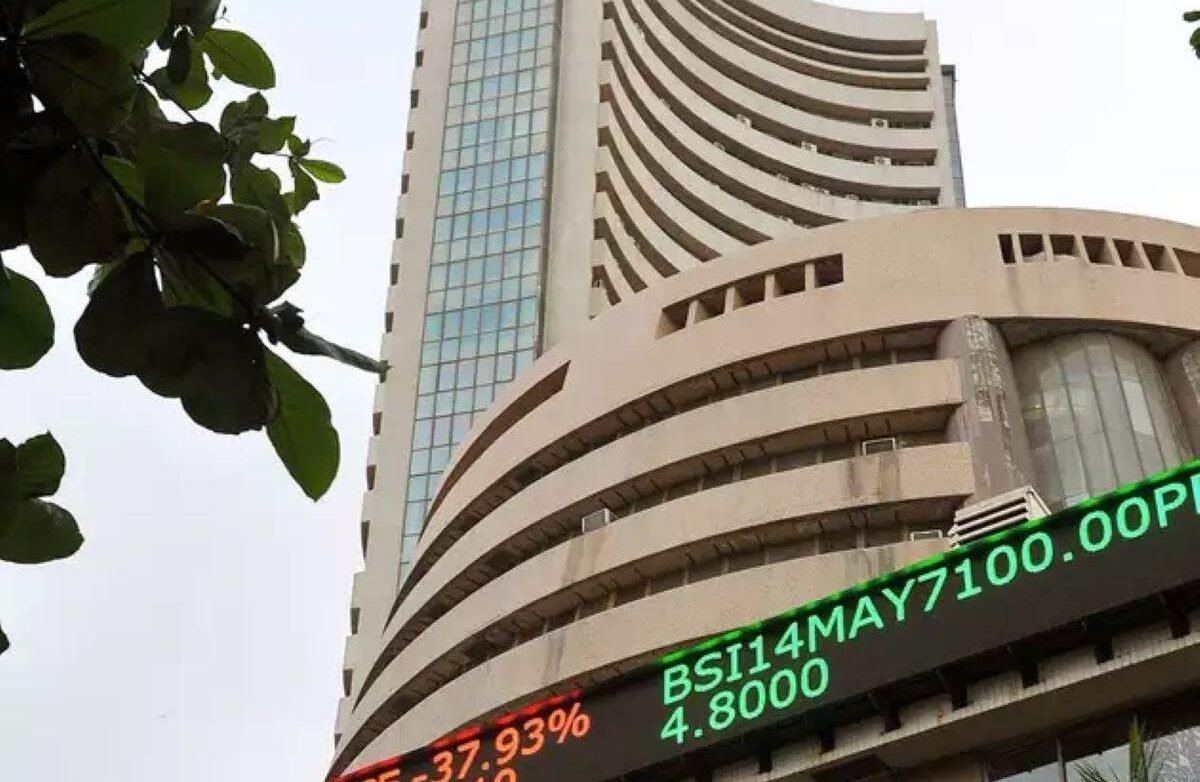Mumbai, June 13, 2025
Indian equity markets plunged sharply on Friday as escalating tensions in the Middle East rattled investor confidence, leading to a broad-based selloff across sectors. The benchmark BSE Sensex nosedived 1,103.53 points, or 1.35%, to close at 80,588.45, while the Nifty 50 declined 320.45 points, or 1.29%, to settle at 24,567.75.
The sharp decline was triggered by reports of Israeli airstrikes targeting Iranian nuclear and missile facilities, which have heightened fears of a broader regional conflict. This geopolitical uncertainty spooked global markets, led to a surge in safe-haven assets like gold and crude oil, and sent shockwaves through emerging markets, including India.
Global Geopolitical Tensions Shake Investor Sentiment
Markets opened deep in the red, tracking cues from Gift Nifty, which was trading nearly 205 points below Thursday’s Nifty futures close, indicating heavy bearish sentiment even before the opening bell.
Reports from global media outlets claimed that Israeli fighter jets had carried out precision strikes on Iran’s Natanz nuclear facility and missile installations late Thursday night. While official confirmation remained limited, the news was enough to trigger risk aversion among global investors, already cautious about the outlook on inflation and interest rates.
“Geopolitical concerns have returned to the center stage,” said Rajiv Mehta, Chief Strategist at Yes Securities. “Investors are pricing in the risk of oil supply disruption, which directly impacts inflation expectations and interest rate trajectories globally.”
Sensex Breaches Key Support Levels, More Downside Possible
The Sensex breached the critical 82,000-mark, forming a long bearish candle on daily charts, a strong indicator of short-term weakness.
“We are of the view that the short-term market texture is weak,” noted Shrikant Chouhan, Head of Equity Research at Kotak Securities. “If the index fails to hold above 81,500, the next key support lies at 81,100, followed by 81,000. A breakdown below these levels could accelerate the correction.”
Chouhan, however, did not rule out an intraday rebound, stating that a recovery above 81,800 might push the index back to 82,150.
Nifty 50 Faces Resistance at 25,200; Risk of Further Correction
The Nifty 50, which had closed Thursday at 24,888.20, witnessed a steep drop of over 1.2%, forming a bearish engulfing pattern on the charts — a sign of possible trend reversal.
“Nifty faced rejection at the 25,200 resistance zone and has now slipped below its 9-day exponential moving average (EMA),” said Om Mehra, Technical Analyst at SAMCO Securities. “While it’s still trading near the 20-day SMA, the structure hints at a mild correction or consolidation phase ahead.”
Dr. Praveen Dwarakanath, Chief Market Strategist at Hedged.in, added, “The RSI divergence near the 25,200 zone and the bearish candle indicate increasing downside risk. A sustained breach below 24,800 could drag the index toward 24,500 in the next few sessions.”
Open Interest data reveals strong resistance at 25,200 and support forming around 24,700, according to Hardik Matalia, Derivatives Analyst at Choice Broking.
Bank Nifty Extends Losses, Nearing Key Support
The Bank Nifty index dropped 377.20 points, or 0.67%, to end the session at 56,082.55, marking its third straight day of correction. The index had been one of the best-performing sectors in recent weeks, but is now under pressure due to profit booking and global sentiment.
“The index has returned to its breakout support zone near 56,000,” said a Bajaj Broking report. “Support lies in the 55,200–55,500 range, while immediate resistance is seen at 57,000–57,700.”
Om Mehra of SAMCO added that the RSI cooling off to 58 suggests weakening bullish momentum. “A breakdown below 55,300 could shift the trend from bullish to neutral or even negative,” he cautioned.
Volatility on the Rise: Traders Brace for Larger Swings
Market volatility surged as the Average True Range (ATR) for Nifty spiked, indicating increased intraday price swings. Investors are closely tracking global crude prices, which surged on supply fears, and US Federal Reserve commentary for clues on future monetary policy moves.
Brent crude oil jumped over 4% intraday, pushing inflation-sensitive sectors like FMCG and autos into the red.
What Lies Ahead: Caution Is the Word
Despite strong macroeconomic fundamentals and resilient corporate earnings, analysts expect Indian markets to remain range-bound or corrective in the short term, especially if the Middle East crisis deepens.
“Investors should avoid leveraged positions and focus on defensive sectors like healthcare and IT,” said Mehta. “Volatility will likely remain elevated until geopolitical tensions ease.”
Conclusion
Friday’s sharp selloff underscores the fragile nature of global investor sentiment amid geopolitical uncertainties. With key indices breaching crucial technical levels and volatility likely to persist, traders and long-term investors alike are advised to stay cautious, maintain stop-losses, and monitor global developments closely. As the world watches how tensions in the Middle East unfold, markets may continue to sway with every new headline.







